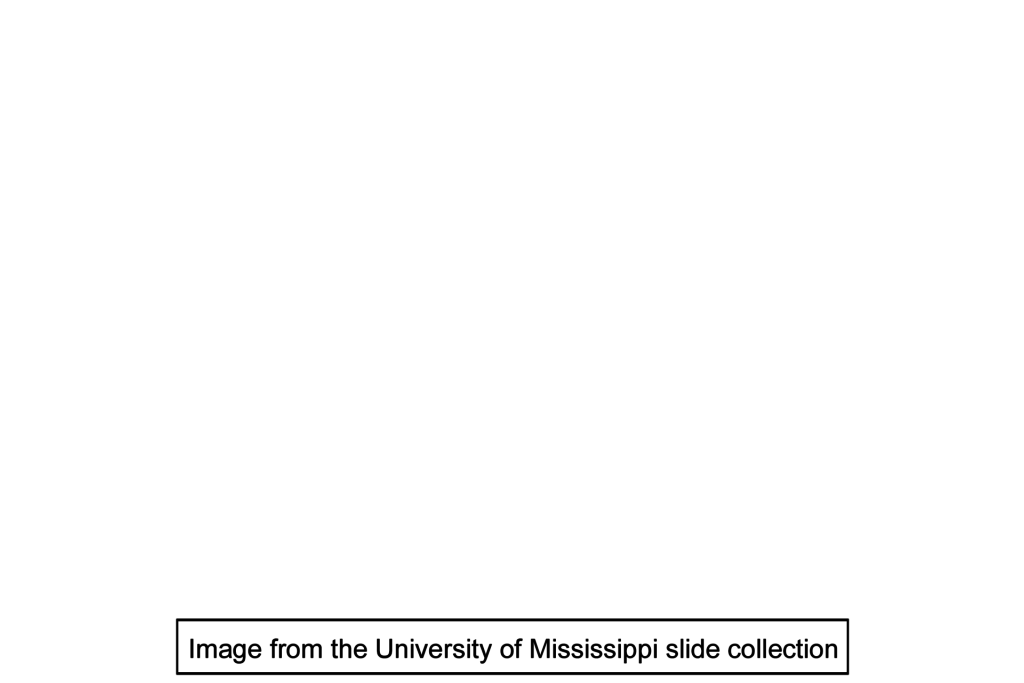
Secondary lymphoid nodule
With antigenic stimulation, primary nodules increase in size and develop a pale central region called the germinal center. They are now termed secondary nodules. The germinal center contains phagocytic cells and large, immature lymphoblasts that divide to form the smaller B lymphocytes. In this early secondary nodule the germinal center is beginning to form; the increased size of the nodule ruptures through the muscularis mucosae.

Secondary lymphoid nodule >
Secondary nodules consist of an outer mantle (corona) of B lymphocytes surrounding the germinal center, where the immunoresponsive B lymphocytes are formed. The germinal center forms following antigen stimulation. The germinal center contains phagocytic cells and large, immature lymphoblasts that divide to form the smaller B lymphocytes. These B cells migrate to and accumulate at the periphery in the mantle or corona region.

- Germinal center
Secondary nodules consist of an outer mantle (corona) of B lymphocytes surrounding the germinal center, where the immunoresponsive B lymphocytes are formed. The germinal center forms following antigen stimulation. The germinal center contains phagocytic cells and large, immature lymphoblasts that divide to form the smaller B lymphocytes. These B cells migrate to and accumulate at the periphery in the mantle or corona region.

Diffuse lymphatic tissue
Secondary nodules consist of an outer mantle (corona) of B lymphocytes surrounding the germinal center, where the immunoresponsive B lymphocytes are formed. The germinal center forms following antigen stimulation. The germinal center contains phagocytic cells and large, immature lymphoblasts that divide to form the smaller B lymphocytes. These B cells migrate to and accumulate at the periphery in the mantle or corona region.

Intestinal lumen
Secondary nodules consist of an outer mantle (corona) of B lymphocytes surrounding the germinal center, where the immunoresponsive B lymphocytes are formed. The germinal center forms following antigen stimulation. The germinal center contains phagocytic cells and large, immature lymphoblasts that divide to form the smaller B lymphocytes. These B cells migrate to and accumulate at the periphery in the mantle or corona region.

Epithelium
Secondary nodules consist of an outer mantle (corona) of B lymphocytes surrounding the germinal center, where the immunoresponsive B lymphocytes are formed. The germinal center forms following antigen stimulation. The germinal center contains phagocytic cells and large, immature lymphoblasts that divide to form the smaller B lymphocytes. These B cells migrate to and accumulate at the periphery in the mantle or corona region.

Intestinal glands
Secondary nodules consist of an outer mantle (corona) of B lymphocytes surrounding the germinal center, where the immunoresponsive B lymphocytes are formed. The germinal center forms following antigen stimulation. The germinal center contains phagocytic cells and large, immature lymphoblasts that divide to form the smaller B lymphocytes. These B cells migrate to and accumulate at the periphery in the mantle or corona region.

Muscularis mucosae
Secondary nodules consist of an outer mantle (corona) of B lymphocytes surrounding the germinal center, where the immunoresponsive B lymphocytes are formed. The germinal center forms following antigen stimulation. The germinal center contains phagocytic cells and large, immature lymphoblasts that divide to form the smaller B lymphocytes. These B cells migrate to and accumulate at the periphery in the mantle or corona region.

Image source >
Image taken of a slide from the University of Mississippi collection.
 PREVIOUS
PREVIOUS